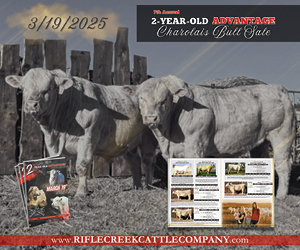
Chinese officials denied entry to U.S. loads of hay because they detected genetically modified alfalfa in the mix.
By: Tim O’Byrne
Pssst! Word on the gravel road is… the BLM doesn’t recognize cheatgrass. Yeah. Cheatgrass as a forage does not officially exist to the BLM according to reliable sources. That’s why the formidable bureau refuses to include it in a range analysis as having at least some nutritional value, encouraging grazing and control of the drought-tolerant weed and becoming part of the solution to reducing range-fire fuel instead of being a part of the problem. That’s also why they refused to take part in a recent University of Nevada Cooperative Extension study overseen by educator Steve Foster and range specialist Brad Schultz to test the idea that cheatgrass grazing might actually be a good idea.
The BLM experts need to talk to an old boy like retired IL Ranch manager Jim Andrae, who’s spent more days on the rangelands of Nevada than most of them have had hot meals. In fact, if they don’t want to take precious time out of their day for a face-to-face lesson like that, especially with them being so tied up with litigation and whatnot, they can flip to page 97 of this issue of WR and read about how back in the day the original effective range managers (Jim Andrae and his peers), used controlled burns and early turnout of cattle onto spring-green cheatgrass areas to not only control the fire fuel levels and weed encroachment problems by hammering it hard and early, but also put a few extra pounds on some hearty cows. Oh, but that would be admitting that cheatgrass might actually be a forage after all.
GO AWAY U.S. HAY
In what can only be described as a scene in a bizarre foreign film, one in which we Americans could not watch without snickering at the irony, China, a country known for having added the toxic substance Melamine to raw milk, wheat gluten and rice protein, has turned away U.S. alfalfa because it discovered some of the plants were genetically modified. Approximately 30% of alfalfa seed in the U.S. is modified to resist Roundup, but hay brokers from California were intent on shipping only non-biotech hay to feed the massive country’s protein hungry dairy cows. How the genmod hay ended up on a slow boat to China is anyone’s guess; it could have been a mix-up in storage, or cross pollination… but last summer Beijing stamped it “Return to Sender”, causing a quick-felt collapse in the international hay shipping business back on our dusty shores.
YOUR SUGGESTIONS MEAN A LOT TO WR
 Folks, we sent out a survey awhile back to some select readers, just to get a feel for what’s going on out there with y’all, and we were very happy to have you return so many of them.
Folks, we sent out a survey awhile back to some select readers, just to get a feel for what’s going on out there with y’all, and we were very happy to have you return so many of them.
The final question on the survey asked if you had any comments or suggestions on future stories for upcoming issues. It ended with a little note from me, stating that, “I’ll read every one” of your suggestions. Well, folks, this here’s the last batch. I’ve read a couple hundred already, and sure want to thank you for your wonderful comments and suggestions. And I promise I’ll get to this last draft once the spring rush is over. We are blessed to have so many loyal readers, busy ranchers like yourselves, take time to help us understand how to bring you the best magazine we possibly can.
Again, WR thanks each and every one of you, and if you didn’t get a survey and want to make a suggestion or comment, we’d love to hear from you. Just mail it to WR Editor, PO Box 91269, Henderson, NV, 89009, or email me at tim@workingranchmag.com .





